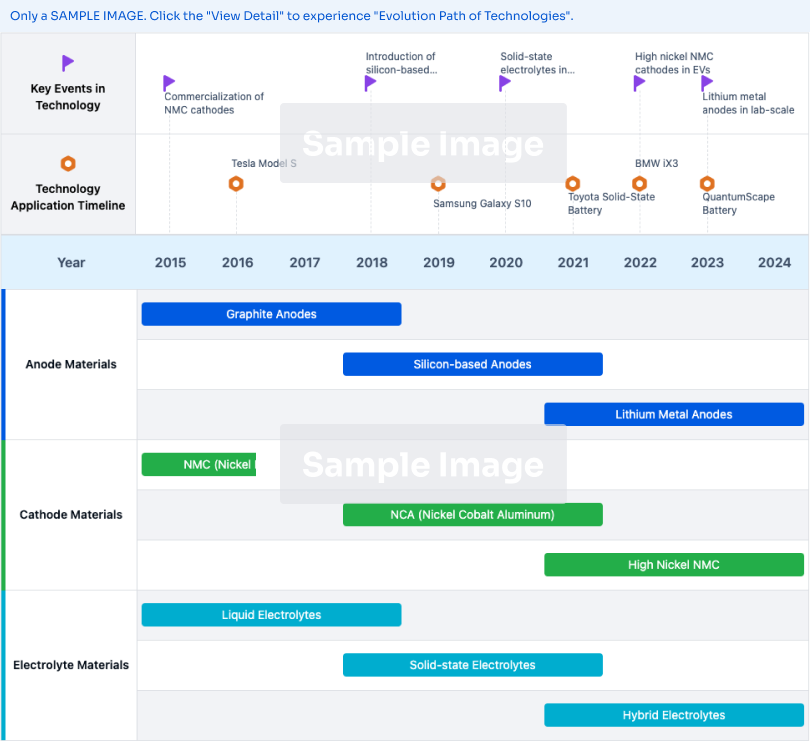Research on molecular modification techniques to enhance material properties - Eureka
Molecular Modification Techniques and Goals
The analysis should cover the evolution of molecular modification techniques over time, highlighting significant milestones and advancements. It should also examine the geographical distribution of research efforts and the major players involved, assessing their contributions and competitive landscape. Additionally, the report should delve into the core technologies, patents, and research papers that underpin innovative solutions in this domain, shedding light on their novelty and technological value.
Market Demand for Enhanced Material Properties
- Growing Demand for Enhanced Materials
Advancements in various industries like aerospace, automotive, and construction are driving the need for materials with superior properties like high strength, durability, and corrosion resistance. - Emerging Applications
Emerging technologies such as 3D printing, nanotechnology, and renewable energy are creating new applications that require materials with tailored properties, fueling the demand for molecular modification techniques. - Sustainability and Environmental Concerns
The push for sustainable and eco-friendly materials is driving the need for molecular modification techniques that can enhance the properties of materials while reducing their environmental impact. - Cost Optimization
Molecular modification techniques can potentially reduce the cost of manufacturing high-performance materials by optimizing the use of raw materials and improving production efficiency.
Current State and Challenges in Molecular Modification
- Current Limitations Molecular modification techniques face challenges in achieving precise control, scalability, and cost-effectiveness. Existing methods often lack selectivity, leading to undesired side reactions and low yields.
- Technical Hurdles
Key hurdles include:
- Controlling reaction pathways and regioselectivity
- Developing efficient catalysts and reaction conditions
- Minimizing byproducts and waste generation
- Geographical Distribution Research efforts are concentrated in regions with strong chemical and materials industries, such as North America, Europe, and Asia (particularly China and Japan).
Evolution of Material Enhancement Technologies

Existing Solutions for Material Property Enhancement
01 Molecular Sieve Modifications
Various methods like cation exchange, hydrophobic treatment, or incorporating additional components to enhance properties of molecular sieves like zeolites, leading to improved catalytic activity, selectivity, or adsorption capacity.- Molecular Sieve Modifications: Various techniques for enhancing molecular sieve properties, such as cation exchange, hydrophobic treatment, or incorporating additional components, leading to improved catalytic activity, selectivity, or adsorption capacity.
- UHMWPE Modifications: Surface treatments, polymer grafting, or blending UHMWPE with other polymers to enhance mechanical strength, interfacial compatibility, or hydrophilicity of UHMWPE fibers or materials.
- Molecular Structure Modifications: Chemical modifications, nanocomposite formation, or structural engineering at the molecular level to improve mechanical properties like strength, toughness, or durability of materials.
- Polymer Property Enhancements: Blending with additives, surface treatments, or chemical modifications of polymer chains to enhance properties like thermal conductivity, flame retardancy, or compatibility with other materials.
- Computational Property Prediction: Molecular modeling and simulations for predicting and understanding material properties based on their molecular structure and composition, aiding in material design and optimization.
02 UHMWPE Modifications
Surface treatments, grafting, blending, or incorporating additives to modify UHMWPE fibers or materials, enhancing mechanical properties, adhesion, or compatibility with other materials.03 Molecular Structure Modifications
Chemical modifications, doping, or incorporating functional groups or additives to improve material properties like mechanical strength, thermal conductivity, or luminescence.04 Polymer Modifications
Blending, grafting, or surface treatments to modify polymer properties like polyethylene, improving hydrophilicity, compatibility, or flame retardancy.05 Computational Property Prediction
Computational methods and models for predicting or determining properties of molecular systems or materials based on their molecular structure or composition, guiding material design and modification.
Key Players in Material Science and Modification
Xyleco, Inc.
International Business Machines Corp.
Core Innovations in Molecular Modification
- Introducing crystallizable substances into biodegradable materials to improve their physical-chemical properties
- Utilizing substances like potassium nitrate, urea, or citric acid as crystallizable substances
- Applicable to various biodegradable materials like foils, composites, and coatings
Potential Breakthroughs in Material Enhancement
- Computational Materials Design
- Nanostructured Materials
- Metamaterials and Metasurfaces






